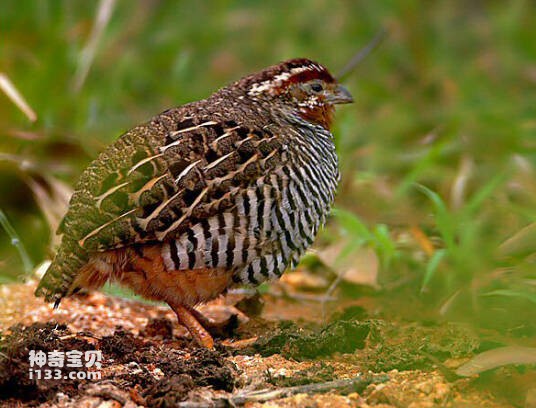Perdicula asiatica
IUCN
LCBasic Information
Scientific classification
- name:Perdicula asiatica
- Scientific Name:Perdicula asiatica,Jungle Bush-quail
- Outline:Landfowl
- Family:Chickeniformes P.family P.Genus
Vital signs
- length:15.2-17.5cm
- Weight:No textual research information is available
- lifetime:No textual research information is available
Feature
Distribution and Habitat
Origin: India and Sri Lanka.
Regional extinction: Nepal.
Appearance
The quail is 15.2-17.5 cm long, chestnut brown with black brow lines with white stripes attached to the nape. There is a dark brown cover of ear feathers, a chestnut brown chin and a yellow band on the throat with pale yellow or reddish brown spots. The chest and abdomen are white with distinct horizontal black stripes. The chestnut brown tail is reddish-brown underneath. The beak is brown with a black tip; Legs and feet orange. The main difference between male and female birds is that the female has an almost even chest and abdomen.
Details
The Jungle Bush-quail (Perdicula asiatica) has five subspecies.

Tubs usually gather in groups of 6-10 individuals. Move around in open grass or in the grass beside forest roads and driving tracks, eating and sandbathing in the morning and evening. Groups quickly gather around each other by calling and Shouting. Food consists mainly of seeds. Grass seeds, in particular, also eat insects. The breeding season follows the rainy season and lasts until the onset of cold weather, depending on the geographical location of life. Timid and wary in the wild, it takes a lot of grass cover to adapt to captivity. Can form close groups of about a dozen birds. However, during the breeding season, male birds become very aggressive and territorial. Females lay 5-6 eggs per litter, which incubate for 16-18 days. Males are very protective of females and newly hatched chicks.
Listed on the International Union for Conservation of Nature (IUCN) 2016 Red List of Threatened Species ver 3.1 - Not Threatened (LC).
Protect wild animals and eliminate wild meat.
Maintaining ecological balance is everyone's responsibility!








